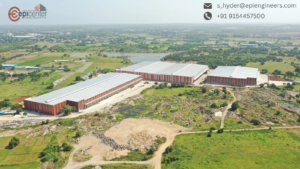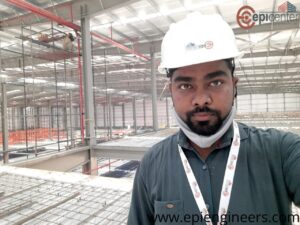Introduction
In an era where environmental consciousness is at the forefront of global concerns, industries are reevaluating their practices to minimize their ecological footprint. The field of industrial structural design is no exception. Sustainable practices in industrial structural design are emerging as a driving force for change, not only to reduce environmental impact but also to create more efficient, cost-effective, and forward-thinking industrial facilities. In this article, we’ll delve into the significance of sustainable practices in industrial structural design and how they are helping to shape a greener future.
The Imperative of Sustainability
Sustainability is more than just a buzzword—it’s a necessity. As industries expand and global energy demands increase, finding sustainable solutions is crucial to mitigating the environmental impact. Industrial structural design plays a pivotal role in this endeavor.
1. Eco-Friendly Material Selection
One of the cornerstones of sustainable industrial structural design is the careful selection of materials. Engineers and architects are opting for eco-friendly materials that reduce environmental harm, promote energy efficiency, and have a longer lifespan. For example, using recycled or reclaimed materials not only conserves resources but also reduces waste.
2. Energy Efficiency
Sustainability and energy efficiency go hand in hand. Industrial structures are now designed with energy-saving features such as improved insulation, energy-efficient HVAC systems, and smart lighting controls. These features not only reduce energy consumption but also lower operational costs.
3. Green Building Certifications
Sustainable industrial structural design often involves pursuing green building certifications such as LEED (Leadership in Energy and Environmental Design) or BREEAM (Building Research Establishment Environmental Assessment Method). These certifications validate a building’s eco-friendliness and can lead to various incentives and recognition.
4. Renewable Energy Integration
Integrating renewable energy sources into industrial facilities is a hallmark of sustainable design. Solar panels, wind turbines, and geothermal heating systems are examples of renewable energy solutions that can reduce a facility’s reliance on fossil fuels and lower its carbon footprint.
5. Reduced Environmental Impact
Sustainable design extends beyond the building itself. It includes measures to reduce environmental impact during construction and operation, such as minimizing water consumption, managing construction waste responsibly, and implementing sustainable transportation options for employees.
Conclusion
Sustainable practices in industrial structural design are not just about meeting regulatory requirements; they represent a commitment to a greener, more responsible future. By embracing eco-friendly materials, prioritizing energy efficiency, pursuing green certifications, integrating renewable energy sources, and minimizing environmental impact, industries can lead the way toward a more sustainable and environmentally conscious industrial landscape. As we continue to address the global climate crisis, sustainable industrial structural design is a vital step towards building a greener and more sustainable future for all.



